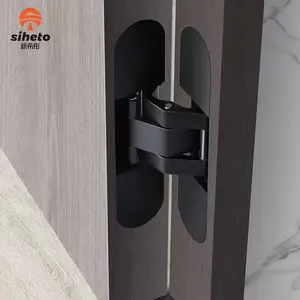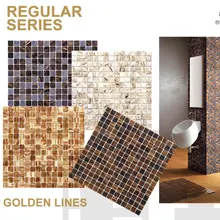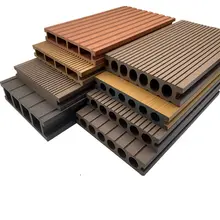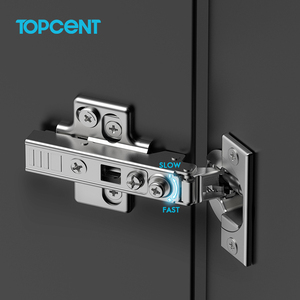Introduction
The door hinge, a seemingly simple device, has a rich history dating back to 1600 B.C. Over the centuries, it has evolved from a basic pivot to a sophisticated piece of engineering, offering not just functionality but also aesthetic appeal. Today, the latest door closing hinge technology is transforming our living experience. From the compact and functional closer hinges to the silent soft-close hinges, the modern hinge technology is addressing door closing challenges and enhancing safety, convenience, and aesthetics in our homes. This article delves into the evolution of door hinge technology, the types of modern door closing hinges, their benefits, and how to choose and maintain them.
The Evolution of Door Hinge Technology
The concept of a hinge has been used throughout history, with the earliest pivot hinge dating back to 1600 B.C. The Egyptians developed the metal hinge, and the Romans used hinges for everyday needs. English colonies in the 16th and 17th century improved the hinge using reinforced metals, creating stronger hinges. Different styles and sizes were designed to make everyday appliances easier to use. With further development, we are brought swiftly forward to the modern day, where a huge number of different style hinges are used on a number of applications.
Understanding the Latest Door Closing Hinge Technology
The latest door closing hinge technology, known as closer hinges, integrates door control mechanisms into the hinge's barrel. This innovative engineering has made closer hinges more compact and functional, offering unique combinations of features and benefits. These hinges address door closing challenges that are not satisfactorily met by overhead surface-mounted door closers. They are used on doors with special needs and ordinary doors due to economic, aesthetic, practical, and other reasons. High-performance closer hinges have adjustable springs regulated by mechanical and hydraulic devices, exceeding the industry standards for Self-closing Hinges & Pivots.
Types of Modern Door Closing Hinges
Modern door closing hinges come in various types, each designed for specific applications. The 'Butt Hinge' is a popular choice for both interior and exterior doors due to its neat appearance. 'T-Hinges' are used where function outweighs aesthetics, such as garage doors. 'Strap Hinges' are ideal for utility applications, like hinging lids in the center. 'Gate Hinges' are adjustable and perfect for round or square posts. 'Invisible Hinges' are completely concealed when the door is closed, offering a clean look. Lastly, 'Piano Hinges', also known as continuous hinges, combine strength with good looks, making them ideal for thin materials.
Soft-Close Hinges
Soft-close hinges are a modern innovation in door hinge technology. They incorporate hydraulics to ensure that when you close a cabinet door, it eases shut silently, appearing to glide closed. This is a contrast to the 'thump' sound often associated with traditional self-closing hinges. Interestingly, most soft-closing hinges also have self-closing features, but not all self-closing hinges are soft-closing. An alternative to the soft-close hinge is a Soft-Close Adapter, a small device installed into an existing cabinet without replacing the hinges, providing the soft-close experience with less hassle.
Self-Closing Hinges
Self-closing hinges are unique, closing automatically without requiring manual intervention. They are used to connect doors, gates, panels, and other solid objects. These hinges work by exerting a small amount of force that pulls the connected object back to its default and closed position. The key component is a spring-loaded knuckle. When you open a door connected with a self-closing hinge, the enclosed spring stretches, creating tension. The hinge then pulls the door back to its closed position automatically as the spring attempts to relieve this tension.
Concealed Hinges
Concealed hinges offer a high-performance solution for flush doors. These hinges are adjustable in 3 dimensions, providing precision and control. They're ideal for heavy doors, simplifying installation and saving costs. Concealed hinges come in a wide range of premium finishes, ensuring aesthetic compatibility with other hardware. They're also maintenance-free, set for the life of the building, and tested to 1,000,000 cycles under full load. This makes them a reliable choice for both interior and exterior doors.
Benefits of Using the Latest Door Closing Hinge Technology
Soft-close hinges, a modern door closing technology, offer numerous benefits. They ensure a quiet environment by eliminating the noise of slamming doors. They also extend the lifespan of your cabinets by preventing the doors from hitting the edges. The installation process is straightforward, requiring no professional knowledge. Most importantly, they enhance safety, especially in homes with children, as the doors close softly and slowly, reducing the risk of injury.
Ease of Use and Convenience
One of the key benefits of concealed hinges, a type of door closing hinge, is their ease of use and convenience. They are easy to install, making them a practical choice for many homeowners. Additionally, they can be easily removed if necessary. This flexibility in installation and removal simplifies the process of door maintenance and upgrades, contributing to a seamless living experience.
Enhanced Safety
Self-closing door hinges enhance safety, particularly in fire situations. These hinges work through a spring or piston mechanism that closes the door once released. In case of a fire, they help contain the blaze, providing extra time for evacuation and preventing extensive damage. Some advanced hinges react to heat, closing the door when a certain temperature is reached. Unlike other fire safety door options, self-closing door hinges do not require batteries, electricity, or complicated integrations, making them easy to maintain.
Improved Aesthetics
When it comes to aesthetics, door hinges play a crucial role. Hidden door hinges, also known as concealed hinges, are concealed within the door and the door frame, creating a clean and seamless look. This aesthetic advantage makes them a favorite choice for modern interior designers and homeowners who prioritize sleek and minimalist designs. Flush hinges, designed to be completely flush with the surface of the door and door frame, result in a subtle and streamlined appearance. Front door hinges offer design opportunities to create a welcoming and inviting entrance, complementing the overall architecture of the home.
How to Choose the Right Door Closing Hinge for Your Home
When choosing the right door closing hinge, consider the type of door and its usage. For heavy or frequently used doors, mortise hinges are a reliable choice. Surface hinges, on the other hand, are suitable for lightweight, indoor doors. The type of hinge, such as ball bearing, plain bearing, or spring hinges, also matters based on the door's weight and frequency of use. The door's dimensions and weight are crucial in selecting the right hinge size and weight capacity. Finally, consider the aesthetics and whether you prefer visible or concealed hinges.
Installation and Maintenance of Door Closing Hinges
Installing a self-closing hinge involves aligning the hinge with the door, drilling pilot holes, and attaching the hinge with screws. Adjustments can be made by moving the locking pin on the hinge's spring to control the door's closing speed. If the hinge fails to function as desired, lubrication or spring replacement may be necessary. To remove a self-closing hinge, reduce the tension, clamp the hinge open, and carefully unscrew the hinge. Be prepared for the force of the spring when removing the final screw.
Conclusion
The evolution of door hinge technology has brought us to an era where door closing hinges are not just functional but also enhance our living experience. The latest door closing hinge technology, including soft-close, self-closing, and concealed hinges, offers a range of benefits from noise reduction and extended lifespan of cabinets to enhanced safety and improved aesthetics. Choosing the right hinge for your home involves considering the door type, usage, dimensions, weight, and your aesthetic preference. While installation and maintenance of these hinges are straightforward, they require careful handling due to the spring tension. As we continue to embrace these advancements, we can look forward to even more innovative and user-friendly door closing solutions in the future.












































 浙公网安备 33010002000092号
浙公网安备 33010002000092号 浙B2-20120091-4
浙B2-20120091-4